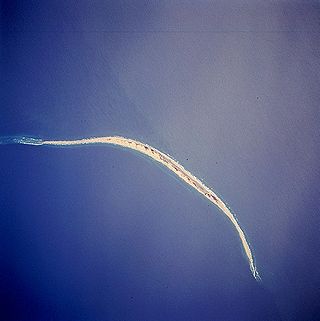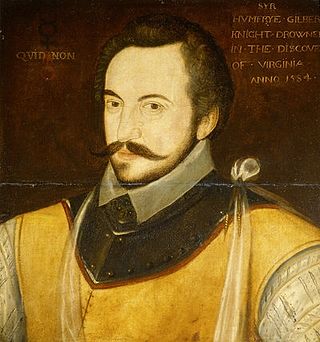
1583 (MDLXXXIII) was a common year starting on Saturday of the Gregorian calendar and a common year starting on Tuesday of the Julian calendar, the 1583rd year of the Common Era (CE) and Anno Domini (AD) designations, the 583rd year of the 2nd millennium, the 83rd year of the 16th century, and the 4th year of the 1580s decade. As of the start of 1583, the Gregorian calendar was 10 days ahead of the Julian calendar, which remained in localized use until 1923.

Sable Island is a small Canadian island situated 300 km (190 mi) southeast of Halifax, Nova Scotia, and about 175 km (109 mi) southeast of the closest point of mainland Nova Scotia in the North Atlantic Ocean. The island is staffed year round by three federal government staff, rising during summer months when research projects and tourism increase. Notable for its role in early Canadian history and the Sable Island horse, the island is protected and managed by Parks Canada, which must grant permission prior to any visit. Sable Island is part of District 7 of the Halifax Regional Municipality in Nova Scotia. The island is also a protected National Park Reserve and an Important Bird Area.

Sir Humphrey Gilbert was an English adventurer, explorer, member of parliament and soldier who served during the reign of Queen Elizabeth I and was a pioneer of the English colonial empire in North America and the Plantations of Ireland. He was a maternal half-brother of Sir Walter Raleigh and a cousin of Sir Richard Grenville.

HMS Erebus was a Hecla-class bomb vessel constructed by the Royal Navy in Pembroke dockyard, Wales, in 1826. The vessel was the second in the Royal Navy named after Erebus, the personification of darkness in Greek mythology.

Cape Race is a point of land located at the southeastern tip of the Avalon Peninsula on the island of Newfoundland, in Newfoundland and Labrador, Canada. Its name is thought to come from the original Portuguese name for this cape, "Raso", meaning flat or low-lying. The Cape appeared on early sixteenth century maps as Cabo Raso and its name may derive from a cape of the same name at the mouth of the Tagus River in Portugal. The cape was the location of the Cape Race LORAN-C transmitter until the system was decommissioned in 2010. It is also home to the Cape Race Lighthouse, notable for having received the distress call from the RMS Titanic.
Graveyard of the Atlantic is a nickname for the treacherous waters and area of numerous shipwrecks off the Outer Banks of North Carolina, United States, which are due to the coast's shifting sands and inlets. To a lesser degree, this nickname has also been applied to Sable Island off of Nova Scotia, Canada, as well as the waters off Cape Cod, Massachusetts, United States.

Marine salvage is the process of recovering a ship and its cargo after a shipwreck or other maritime casualty. Salvage may encompass towing, re-floating a vessel, or effecting repairs to a ship. Today, protecting the coastal environment from spillage of oil or other contaminants is a high priority. Before the invention of radio, salvage services would be given to a stricken vessel by any ship that happened to be passing by. Nowadays, most salvage is carried out by specialist salvage firms with dedicated crew and equipment.
St. Lawrence is a town located on the Burin Peninsula of Newfoundland and Labrador. As of the 2021 Canadian Census, the population of St. Lawrence was 1,115, down from the 2011 Canadian Census of 1,244. Popular family names in the town include Turpin, Tarrant, Slaney, Pike, Lake, Drake and Edwards.
Thirteen ships of the Royal Navy have borne the name HMS Delight:

SS Utopia was a transatlantic passenger steamship built in 1874 by Robert Duncan & Co of Glasgow. From 1874 to 1882 she operated on Anchor Line routes from Glasgow to New York City, from Glasgow to Bombay and from London to New York City. After 1882 she carried Italian immigrants to the United States.
Squirrel was an exploration vessel launched in the 1570s and lost with all hands in 1583.
Stephanus Parmenius was a Hungarian scholar and humanist poet who traveled to Oxford and became involved in the English exploration of the New World. He joined Humphrey Gilbert's expedition to North America with the intention of writing a chronicle of the voyage and its discoveries. Parmenius reached Newfoundland, likely becoming the first Hungarian in the New World. However, he died on the return voyage in 1583 when his ship was lost at sea.






